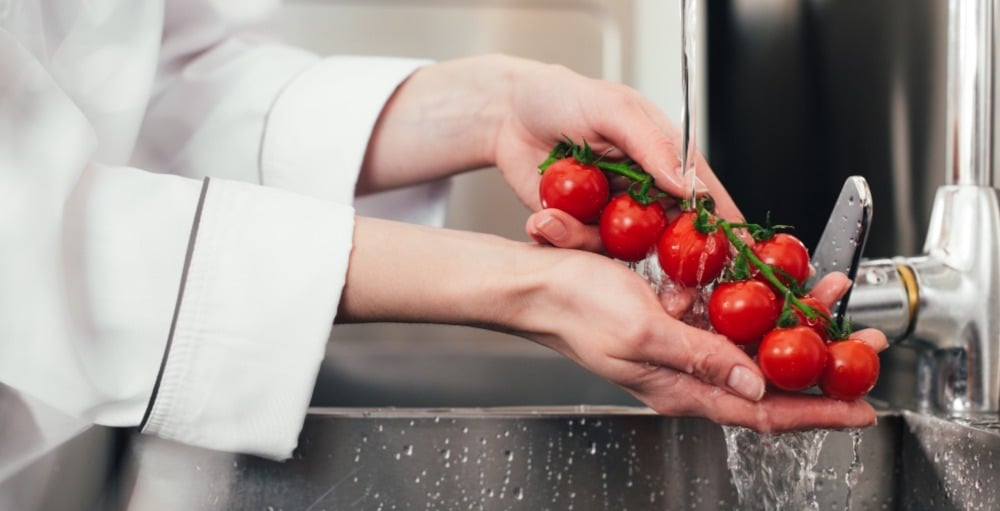Did you know there’s a proper way to wash fruits and vegetables? Find out what it is and why it’s so important.
As a food handler, it’s your responsibility to ensure that the food you transport, prepare or serve is safe for consumption. This includes keeping food safe from contamination and preventing foodborne illness outbreaks.
Each year in the U.S., an estimated 48 million people suffer from foodborne illness. Of those, there are over 128,000 people hospitalized, and an estimated 3,000 deaths. Food-borne illnesses are caused by harmful bacteria, viruses and parasites that can contaminate food and make people ill if consumed. This contamination can happen at many points throughout the food supply chain, including the water or soil on a farm, processing equipment in a food plant, or when handling food during preparation.
Fruits, vegetables, and food safety
As a food worker, you might not think of fruits and vegetables as food poisoning risks. It’s more common to associate foodborne illnesses with potentially hazardous foods like poultry, red meat, seafood, and dairy, all foods that can cause foodborne illness if not kept within a safe temperature range to minimize bacterial growth.
Even though they don’t seem hazardous, fruits and vegetables have been the source of many foodborne illness outbreaks in recent years, such as the E. coli outbreak linked to romaine lettuce in 2018. In fact, according to the USDA, produce has been implicated in 46% of foodborne illness outbreaks.
Like any food moving through the supply chain, fresh produce can become contaminated in many ways. Contamination can occur during growth and harvesting, by animals or insects on farms, or by the individuals harvesting crops. Produce can also be compromised during processing and transport to retail stores, manufacturing facilities, or restaurants. Lastly, as we mentioned above, fruits and vegetables can become contaminated during food preparation in food businesses, which is why it’s so important as a food handler that you follow the proper steps for working with produce.
How to wash produce properly
Washing fruits and vegetables correctly before preparation is a key method of removing visible dirt or harmful pathogens that may have taken up residence. It should be noted, however, that no washing method can remove all germs.To correctly wash produce, follow these steps:
- Clean, sanitize and disinfect the sink and any other food contact surfaces and utensils that you’ll be using.
- Wash your hands in a separate sink, using the correct hand washing method (for 20 seconds with water and soap). Do not use the handwashing sink to wash the fresh produce.
- Rinse the produce thoroughly with plain running water before peeling.
- Note that using soaps or detergents to wash produce can cause the items to become chemically contaminated, putting them at risk to cause foodborne illness if consumed. Only rinse fresh produce in plain running water.
- If needed, use a clean vegetable brush to scrub the rind of firm produce, such as melons.
- Cut away any damaged or bruised areas on the fruit or vegetables.
- Dry the produce with a clean paper towel.
- Place washed, peeled or cut fruits and vegetables in separate clean containers to prevent cross-contamination.
- Clean, sanitize and disinfect the sink and any other food contact surfaces/utensils used.
When working with produce, be sure to keep it away from high-risk foods such as meat or dairy. This can be accomplished by using different cutting boards or designating different prep stations for vegetables and fruits versus other foods. Refrigerate fruits and vegetables within two hours after you cut, peel, or cook them (or one hour if exposed to temperatures above 90°). Chill them at 40°F or colder.
Proper food handler training is the best way to ensure you’re working with different foods safely. Food handler training is a requirement in many states, and Userve’s Food Handler Course is a fast, easy way to learn about food safety and get your Food Handler Card. To find the course in your state, check out the link below.

